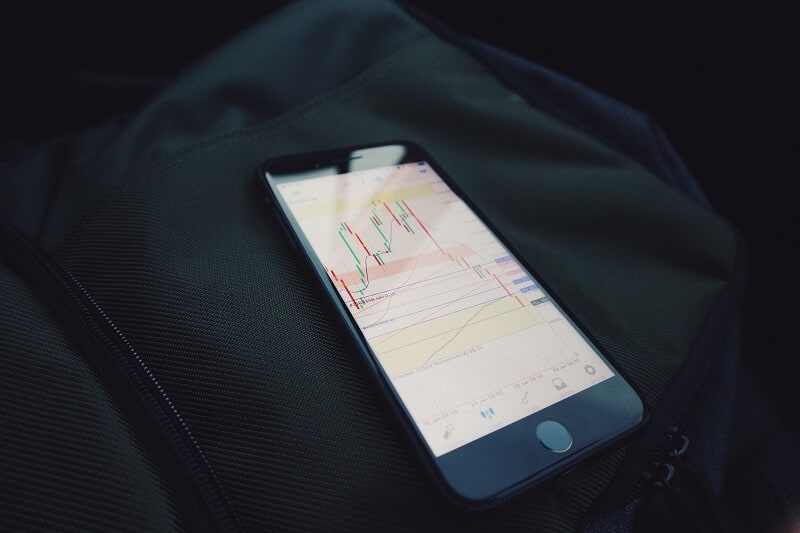
Don’t base the success of your investment portfolio on returns alone. Use these three sets of measurement tools to calculate portfolio performance.
The main goal to calculate portfolio performance is to measure the value created by the investor’s risk management. The majority of investors will judge the success of their portfolios based on returns. But it isn’t enough. To have a sense of how our investment portfolio is well-diversified and how much risk we take we need to calculate portfolio performance. In other words, we need a measure of both risk and return in the portfolio to judge its success. Until the 1960s no one paid attention to the risks involved in obtaining returns. But today we have several ways to calculate portfolio performance and measure it.
Our aim is to present you with these valuable tools.
Sharpe, Jensen and Treynor ratios pair risk and return performances, and unite them into unique value. Well, each of them operates a bit differently so we can choose one to calculate portfolio performance or mix all three ratios.
Calculate Portfolio Performance Using Sharpe Ratio
Sharpe ratio is the measure of risk-adjusted return of an investment portfolio. Or in other words, by calculating it we can find a measure of excess return over the risk-free rate relative to its standard deviation. It is common to use the 90-day Treasury bill rate as the representative for the risk-free rate. This ratio is named after William F Sharpe. He is a Nobel laureate and professor of finance, emeritus at Stanford University.
The formula is:
Sharpe ratio= (PR−RFR) / SD
In this formula, PR represents the expected portfolio return, RFR is the risk-free rate, while SD represents a portfolio’s standard deviation which is a measure for risk. Standard deviation reveals the variation of returns from the average return. So we can say that if the standard deviation is great, the risk involved is also great.
So, you can see how the Sharpe ratio is simple to calculate since it has only 3 variables.
But let’s calculate portfolio performance more realistic. For example, our portfolio has a 20% rate return. The whole market scored 15%. So, we may think that our portfolio is greater than the market, right? But it isn’t a proper opinion. How is that? Well, we didn’t calculate the risk we had to take to earn such a great rate return. What if we took much more risk than we thought. That would mean that our portfolio isn’t optimal. Let’s go further in this analysis. Imagine that our portfolio has a standard deviation of 15% and the overall market has 8%, and the risk-free rate is 3%. This is just a random example. Let’s calculate portfolio performance now using the Sharp ratio formula.
Sharp ratio for our portfolio: (20 – 3) / 15 = 1.13
and
Sharp ratio for the market: (15 – 3) / 8 = 1.5
Can you see now?
While our portfolio scored more than the overall market, our Sharpe Ratio was notably less. So, our portfolio with a lower Sharpe Ratio was a less optimal portfolio even though the return was higher. This means we took an excess risk without extra bonus. But it isn’t the same case when it comes to the overall market, it is actually the opposite. When the market has a higher Sharpe ratio, it has a higher risk-adjusted return. The best portfolio is not the portfolio with the highest return. Rather, an excellent portfolio has a higher risk-adjusted return.
Sharpe ratio is more suitable for well-diversified portfolios because it more correctly considers the risks of the portfolio.
Jensen ratio
The Jensen ratio gauges how much of the portfolio’s rate of return is attributable to our capability to produce returns above average, and adjusted for market risk.
The Jensen ratio measures the excess return that a portfolio produces over the expected return. This figure of return is also recognized as alpha. Let’s say that our portfolio has positive excess returns, so it has a positive alpha. On the other hand, a portfolio with a negative excess return has a negative alpha.
The formula is:
Jenson’s alpha = PR−CAPM
Here, PR stands for portfolio return and CAPM is risk-free rate+β( beta). We know that beta is the return of the market risk-free rate of return.
By using Jensen’s alpha formula we can calculate an investment’s risk-adjusted value. It is also known as Jensen’s Performance Index or ex-post alpha. Jensen’s alpha tries to determine the unusual return of a portfolio no matter what assets it consists of. This formula was first introduced by the economist Michael Jensen. Investors use this formula to calculate portfolio performance by enabling them to discover if an asset’s average return is adequate to its risks.
Regularly, the higher the risk, the greater the expected return. So, that’s why evaluating risk-adjusted performance is especially important for making investment decisions. It will allow doing this.
This Jensen’s alpha also can be expressed as
Jensen’s alpha = Portfolio return – ((Risk-Free Rate + Portfolio Beta x (Market Return – Risk-Free Rate))
The alpha figure can be positive or negative. When it is higher positive values that suggest better performance in comparison to expectations while negative rates showed that the assets perform below expectations. Jensen’s alpha is expressed in percentages.
Let’s take the example of a stock with a return per day based on CAPM. And we see that it is 0.20% but the real stock return is 0.25%. So, Jensen’s alpha is 0.05%. Is it a good indicator? Yes, you can be sure.
The purpose of this measure is to help investors to go for assets that grant maximum returns but with minimum risks.
For example, you found two stocks that are offering similar returns. But one with less risk would be more profitable for investors than the one with greater risk. When calculating Jensen’s alpha you would like to see a positive alpha since that indicates an abnormal return.
Treynor ratio
The Treynor ratio is very useful to calculate portfolio performance. It is a measure that uses portfolio beta, a measure of systematic risk. That is different from the Sharpe Ratio that adjusts return with the standard deviation.
This ratio represents a quotient of return divided by risk. The Treynor Ratio is named after Jack Treynor, the economist, and developer of the Capital Asset Pricing Model.
The formula is expressed as:
Treynor ratio = (PR−RFR) / β
The symbols are well-known, PR stands for portfolio return, RFR refers to the risk-free rate and β is portfolio beta.
We can see that this ratio takes into account both the return of the portfolio and the portfolio’s systematic risk. From a mathematical viewpoint, this formula expresses the quantity of excess return from the risk-free rate per unit of systematic risk. And just like the Sharpe ratio, it is a return/risk ratio.
Let’s assume we would like to compare two portfolios. One is the equity portfolio and the other is the fixed-income portfolio. How can we decide which is a better investment? Treynor Ratio will help us pick the better one.
To put this simply, assume for the purpose of this article only, the equity portfolio has a total return of 9%, while the fixed-income portfolio has a return of 7%. Also, the proxy for the risk-free rate is 3%. Further, let’s suppose that the beta of the equity portfolio is 1.5, while the fixed-income portfolio has a beta of 1.25
Let’s calculate for each portfolio!
Treynor ratio for a equity portfolio = (9% – 3%) / 1.5 = 0.040
Treynor ratio for a fixed-income portfolio = (7% – 3%) / 1.25 = 0.032
So, the Treynor ratio of the equity portfolio is higher which means a more favorable risk/return option. Since the Treynor ratio is based on past performance it is possible not to be repeated in the future. But you will not rely on just one ratio when making an investment decision. You have to use other metrics too.
For the Treynor ratio, it is important to know that the negative value of beta will not give exact figures. Also, while comparing two portfolios this ratio will not show the importance of the difference of the values. For instance, if the Treynor ratio of one portfolio is 0.4 and for the other 0.2, the first isn’t surely double better.
Bottom line
To calculate portfolio performance we have to determine how our portfolio has performed relative to some benchmark. Performance calculation and evaluation methods fall into two categories, conventional and risk-adjusted. The most popular conventional methods combine benchmark and style comparison. The risk-adjusted methods are focused on returns. They count the differences in risk levels between our portfolio and the benchmark portfolio. The main methods are the Sharpe ratio, Treynor ratio, Jensen’s alpha. But there are many other methods too.
But one is sure, portfolio performance calculations are a key part of the investment decision. Keep in mind, portfolio returns are just a part of the whole process. If we never evaluate the risk-adjusted returns, we will never have the whole picture. That could lead to wrong decisions and losses, literally.





